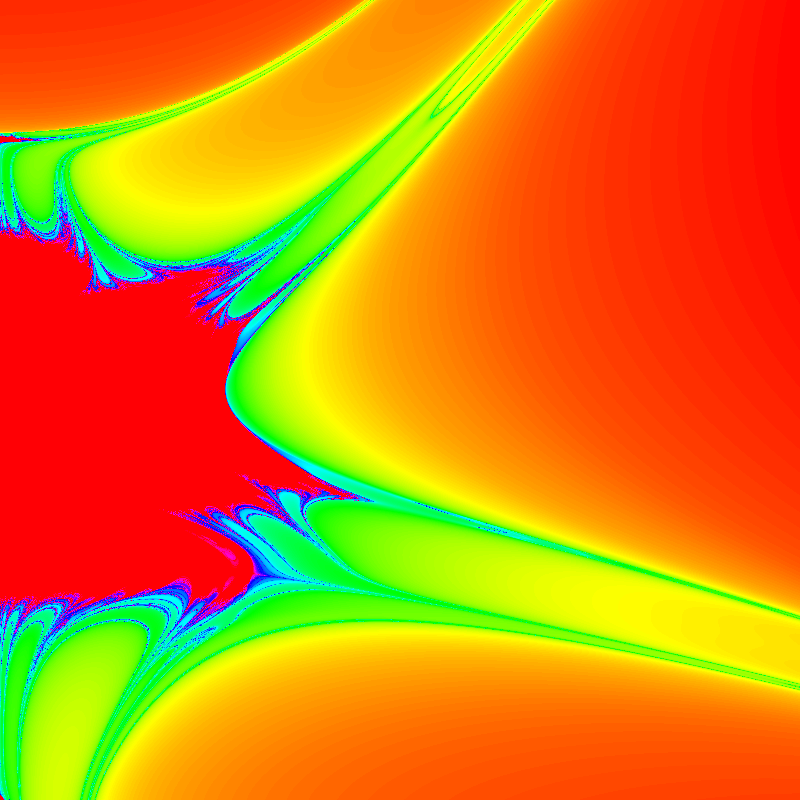Handling editor: Evelyn Sander
The Sydney Dynamics Group
Martin Wechselberger, University of Sydney
Well, everybody knows about the famous Opera House and the Harbour Bridge in Sydney,
the beautiful city beaches (Bondi, Manly, Coogee, just to name a few) and
the easy-going lifestyle Down Under ('no worries, mate'),
but from the dynamical systems point of view you have to add another attraction, namely the
Sydney Dynamics Group (SDG).

SDG new year's BBQ at Coogee Beach (January 12, 2009);
front from left: Naratip Santitissadeekorn, Gary Froyland, Martin Wechselberger, Georg Gottwald, Edgar Knobloch (visitor);
back from left: Ognjen Stancevic, Sebastian Reich (visitor), Simon Lloyd, John Roberts, Dave Galloway, Charlie Macaskill.
The SDG was founded in January 2007 as a cooperation of faculty members
between two of the major universities in Sydney, Australia,
the University of New South Wales (UNSW) and
the University of Sydney (USyd).
It is worth mentioning that Sydney-sider
Matthew Nicol (University of Houston) was a driving force in founding the SDG.
The aim of SDG is to bundle researchers with expertise in dynamical systems theory
to create a critical mass which will attract students as well as national and
international collaborators to the shore of this beautiful city.
The goal is to become a major hub in the southern hemisphere within the global network
of dynamical systems groups.
The group's research missions span topics in pure and
applied dynamical systems, ranging from algebraic dynamics, ergodic theory,
and Hamiltonian dynamics to rhythms in physiological systems,
time series analysis, geophysical fluid dynamics and statistical mechanics.
Let me introduce the 8 faculty members who form the core of SDG and their
primary dynamics interests:
-
Holger Dullin (USyd, Maths):
Hamiltonian systems, rigid body dynamics with applications in biomechanics,
topology of integrable systems,
semiclassical quantization, volume preserving mappings.
-
Gary Froyland (UNSW, Maths):
smooth and numerical ergodic theory, applications to fluid flow.
-
Dave Galloway (USyd, Maths):
solar and geodynamo modelling.
-
Georg Gottwald (USyd, Maths):
geophysical fluid dynamics, pattern formation in biological and chemical systems, nonlinear time series analysis.
-
Charlie Macaskill (USyd, Maths):
geophysical fluid dynamics, especially vortex dynamics and internal waves,
acoustics in complex and random media with applications in biomedical ultrasound, mathematical theory of combustion.
-
Gary Morriss (UNSW, Physics):
statistical mechanics of nonequilibrium systems.
-
John Roberts (UNSW, Maths):
discrete integrable systems, symmetry and time-reversal symmetry, algebraic dynamics.
-
Martin Wechselberger (USyd, Maths):
invariant manifold theory, canard theory, geometric singular perturbation theory with applications to the nervous system and cell signalling.
|

An eigenfunction of a transfer operator highlights gyres in the Weddell and Ross Seas
off the Antarctic Coast (Froyland et al., Phys. Rev. Lett. 98:224503, 2007)

Escape time diagram of the Levitron, a levitating magnetic top
(Dullin, Regular and Chaotic Dynamics 9, 255-264, 2004)
|
The first two years of SDG attracted already many international visitors including
Michael Baake (University of Bielefeld),
Chris Bose (University of Victoria),
Mike Field (University of Houston),
Arek Goetz (San Francisco State University),
Edgar Knobloch (UC Berkeley),
Ian Melbourne (University of Surrey),
Sebastian Reich (University of Potsdam),
David Terman (Ohio State University) and
Franco Vivaldi (Queen Mary, University of London).
We are looking forward to hosting more visitors.
A core activity within SDG is the fortnightly seminar on Friday afternoon
(hosted alternately at UNSW and USyd). The setting is very informal and
lively discussions are the norm. Consequently, we go well beyond the scheduled hour.
Sometimes, we even ask the speaker to come back and continue the presentation the next time
(well, after 2 hours you'd better stop especially if you don't want to miss Friday's happy hour!).
Chris Bose holds the record with 3 consecutive sessions on invariant measures in ergodic theory
which was a true highlight in 2008. We really enjoyed his talks and would like to thank him
for his great effort. Honorable mention goes to Warren Weckesser who gave two sessions
on two different topics, canards and the SIR model.
Students obviously benefit from both the seminar series and visitors. Currently,
SDG members supervise 14 Ph.D. students as well as 4 postdoctoral researchers.
Prospective students who would like to work with SDG should contact corresponding members
directly and/or check the web for open positions. We will post open positions within the
About the Dynamical Systems Profession
section of DSWeb. So check this page regularly.
Just a little reminder that Sydney is not only on the 'other side' of the hemisphere
but also out of phase with the seasons. So, whenever it is winter on the northern hemisphere,
we have summer (including beaches, surf, sun if I haven't mentioned that yet). You get the point.
Finally, here is the most important information for mathematicians: we have arguably the best
coffee in the world! That's a well hidden secret, but it keeps us running. Cheers!